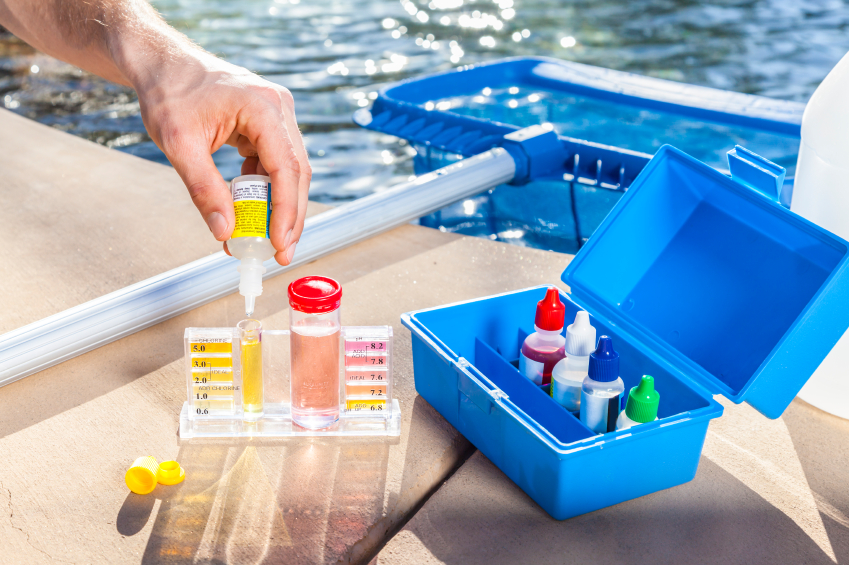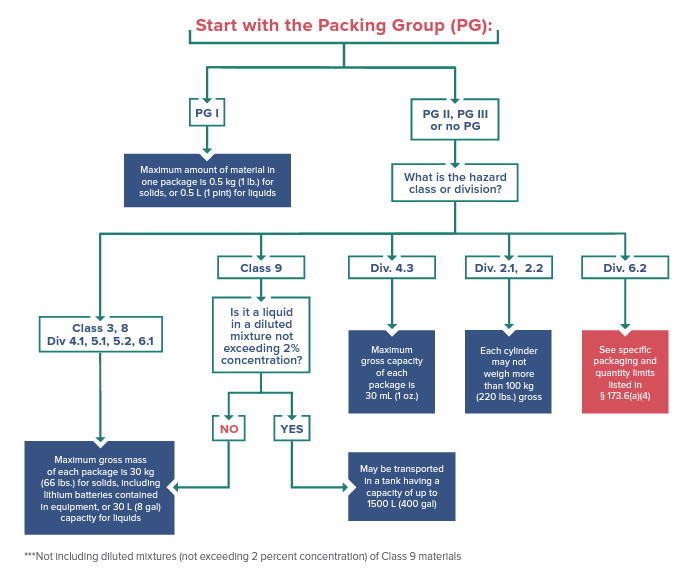
Hazmat University’s 49 CFR (DOT Ground) online hazmat training course will educate anyone involved in the handling and/or shipping of materials of trade (MOT) to determine if they qualify for the MOT exception. Where the MOT exception cannot be met, the individuals handling and/or transporting MOT, including plumbers, landscapers, welders, painters, and pest control workers, among others, will benefit from Hazmat University’s 49 CFR (DOT Ground) online hazmat training course to safely transport hazmat in commerce.
Do you carry hazmat as part of your job? Many people do. Plumbers, landscapers, construction workers among many others rely on chemicals as part of their jobs. Chemicals such as gasoline, paint thinners, gas cylinders and batteries are often carried for use in performing work. These materials are all classified as hazmat because they can pose an unreasonable risk to health, safety and property when transported in commerce.
Hazmat, when carried as part of your job is called Materials of Trade (MOT). The Pipeline and Hazardous Materials Safety Administration (PHMSA) regulates these materials in the 49 CFR in § 173.6. When shipped in accordance with § 173.6, MOTs are subject to less stringent requirements than fully regulated materials.
What are MOTs?
MOTs are hazmat, other than a hazardous waste, that are carried on a MOTOR VEHICLE in certain quantities to:
- Protect the health and safety of the motor vehicle operator or passengers, such as insect repellant or a fire extinguisher.
- Support the operation or maintenance of a motor vehicle (including its auxiliary equipment), such as a spare battery or gasoline.
- Directly support a principal business of a private motor carrier (including vehicles operated by a rail carrier) that is other than transportation by motor vehicle – for example, chemicals for landscaping, pest control, painting, or plumbing services, or gases for welding.
How Do I Know If I Have Materials of Trade?
You are responsible for determining whether you are carrying MOT. PHMSA also requires that you carry these materials according to established rules.
One of the best ways to determine if you are carrying a MOT is to check the safety data sheet (SDS) for the chemical. Section 14 of all SDSs contain transportation information for the material. If the chemical is regulated, this section should contain information, including the 4-digit UN number, proper shipping name, the hazard class and packing group of the material.
What Do I Do If I Am Carrying MOT?
MOTs are subject to regulations by PHMSA. There are strict quantity limitations that must be followed for each type of material you are carrying. If the product is properly packaged and within the quantity limits of the MOT exception, there is relief from some regulatory requirements.
MOT are excepted from the requirements for shipping paper, emergency response information, placarding, training, and record retention. Some requirements including packaging, marking, and labelling still apply.
Not all materials can be shipped as MOT. If the materials do not meet the exceptions of 49 CFR § 173.6, then the material must be shipped fully regulated.
What Are the Limitations For MOT?
The flowchart below was provided by DOT and can be used to determine whether the material is authorized to be shipped as MOT and the quantity limitations for it. Also, the total weight of MOT (including the weight of the packaging) in a single vehicle may not exceed 440 lbs.

What Other Requirements Are There For MOT?
When packaging MOT, there are packaging and marking requirements that must be followed.
The material must be packaged in its original packaging or in a packaging of equal or greater integrity. The material must not leak from the packaging. The packaging must be secured and protected from damage. Gasoline must be in metal or plastic DOT or OSHA approved containers. Outer packaging (like boxes) are not required for receptables that are protected inside cages or compartments.
All packagings must be marked with the common name of the material (ie. gas) or the proper shipping name. A tank containing a diluted mixture (not more than 2% concentration) of a Class 9 material must be marked with the identification number on two opposing sides. Cylinders and pressure vessels must be marked with the proper shipping name and identification number and have a hazard class warning label. If the package contains a reportable quantity of a hazardous substance, it must be marked “RQ” (reportable quantities are found in Appendix A of Section 172.101 in the HMR).
For more information about shipping MOT, see PHMSA’s MOT brochure.
Choose Hazmat University for Your 49 CFR (DOT Ground) Online Hazmat Training
The US DOT has mandated training for anyone involved in the shipping and handling of hazardous materials, including those transporting materials of trade (MOT), such as landscapers, plumbers, welders, painters, and pest control workers. Hazmat University provides the most updated 49 CFR (DOT Ground) online hazmat training course in an interactive, engaging, and learner-friendly format.
Through this self-paced, convenient, and flexible online hazmat training course, the participants will be able to learn about the correct classification, identification, packaging, marking, and labeling of hazardous materials as well as understand the safety, security, and emergency response requirements related to shipping hazmat by ground.
Hazmat University’s 49 CFR online hazmat training course provides both initial and recurrent training as required for shipping, handling and/or transport of hazmat by ground. Our 49 CFR (DOT Ground) online training course is designed according to the requirements specified in the latest version of Title 49, CFR Subpart H, Section 172.704.
If you have questions regarding any online hazmat training courses of Hazmat University or wish to speak to a knowledgeable representative, give us a call at (844) 427-0167 or fill out this contact form.
Be Confident. Be Competent. Be Compliant.